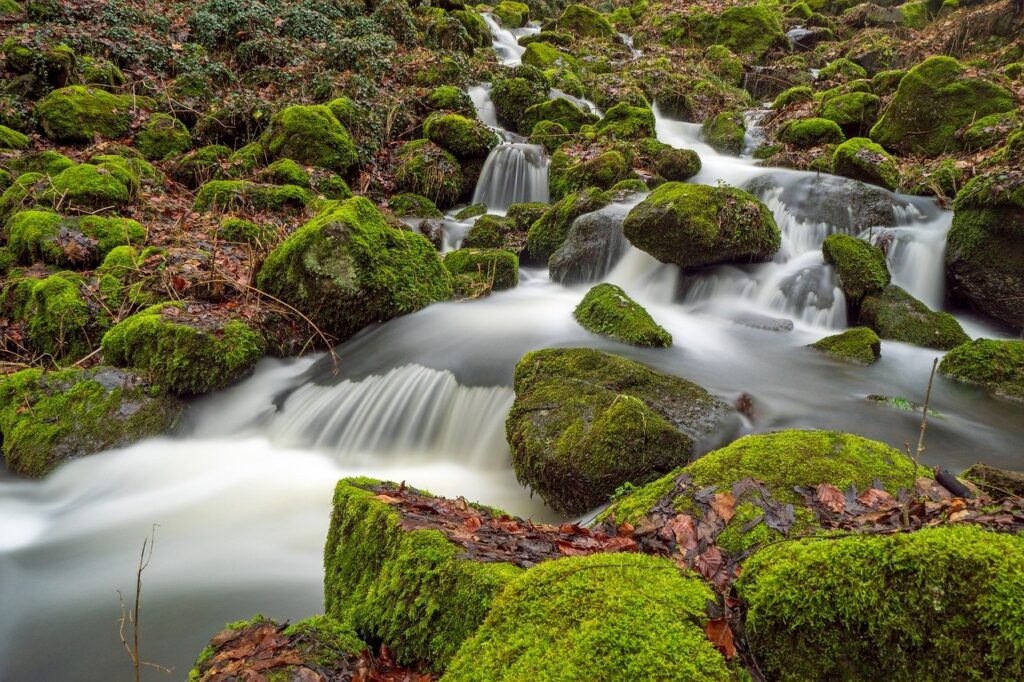Life-Giving Water
Water is the foundation of all life on Earth, and native plants have evolved to make the most of this vital resource. In our gardens, the relationship between plants and water should echo the natural systems that have sustained ecosystems for millennia.
Native plants, which are adapted to local climates and seasonal rainfall patterns, typically require far less supplemental irrigation than exotic species. This makes them not only easier to grow but also more sustainable, helping gardeners conserve water—a critical resource, especially in times of drought or environmental stress.
The spring and summer of 2025 have brought with them a season of unsettling extremes—torrential downpours followed by dry, scorching spells, flash floods sweeping through neighborhoods, and thunderclouds rolling in with little warning. For gardeners and land stewards, these weather patterns haven’t just disrupted plans—they’ve challenged our relationship with water itself.
Across the mid-Atlantic and beyond, rainfall has become less predictable and more intense, overwhelming stormwater systems and exposing the vulnerabilities in our landscapes. At the Delaware Botanic Gardens and in home gardens alike, the importance of thoughtful water management has never been clearer. The storms of 2025 are a stark reminder: we must design with nature, not against it. This season calls on us to deepen our understanding of how native plants, healthy soil, and regenerative design can help us adapt, absorb, and thrive—no matter what the skies bring.
The Role of Native Plants in Water Conservation
Native plants are perfectly attuned to the natural cycles of rainfall, evaporation, and drought in their environments. Unlike many imported ornamental plants, which may demand frequent watering, native species have adapted to thrive in the specific rainfall patterns and soil conditions of their region.
This means that, once established, they often require little to no irrigation. For example, in the Mid-Atlantic region, native species like Asclepias incarnata (swamp milkweed) and Iris versicolor (blue flag iris ) are naturally suited to moist, low-lying areas and can withstand periodic flooding, making them ideal for rain gardens and wetland zones.
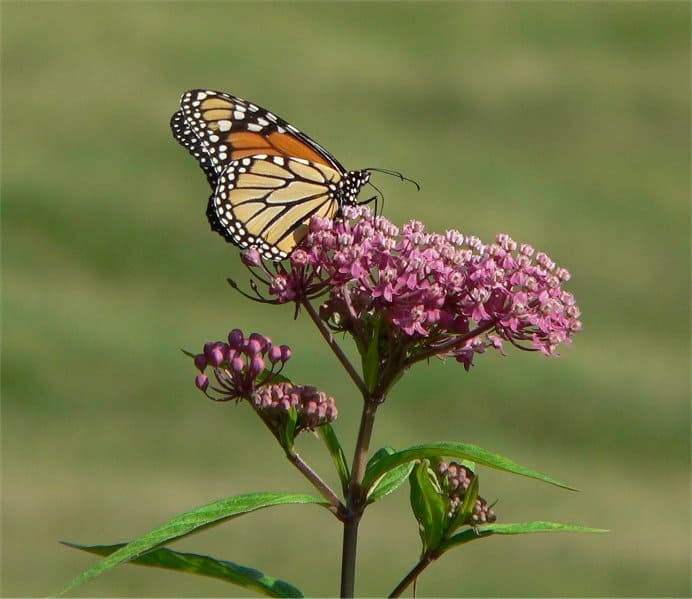
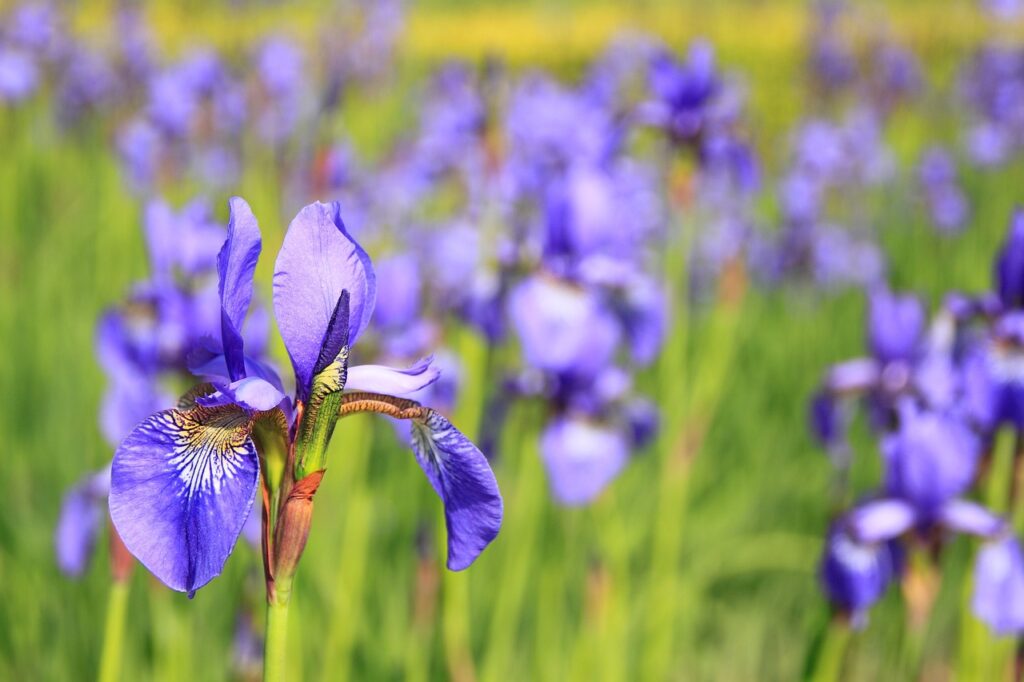
By choosing native plants, gardeners can drastically reduce their reliance on irrigation systems, which often draw on municipal water supplies. This not only cuts down on water bills but also reduces the strain on local freshwater sources, many of which are already stressed by overuse and pollution. In areas prone to drought, native plants’ resilience and efficiency make them a critical part of a water-wise gardening strategy.
Embracing Water-Efficient Gardening Practices
One of the key principles for conserving water in native plant gardens is integrating water-efficient gardening practices. These techniques, which mimic natural processes, ensure that water is captured, stored, and used as efficiently as possible. Chief among these practices is rainwater harvesting.
Rainwater Harvesting
By installing rain barrels beneath downspouts or creating catchment systems, gardeners can collect and store rainwater to be used during dry spells. Rainwater is naturally soft, lacking the chemicals found in treated municipal water, making it ideal for irrigating sensitive native plants. Collecting rainwater also helps reduce runoff, which can carry pollutants like fertilizers and pesticides into local waterways, harming aquatic ecosystems.
Incorporating rain gardens into landscape designs is another effective strategy. Rain gardens are shallow depressions planted with native species that tolerate both wet and dry conditions. They are designed to capture runoff from roofs, driveways, and other hard surfaces, allowing it to slowly infiltrate the soil rather than flowing directly into storm drains.
This not only replenishes groundwater supplies but also filters pollutants, improving water quality. At the Delaware Botanic Gardens, rain gardens play a vital role in managing water flow from Pepper Creek, preventing erosion, and creating wetland habitats for species like Hibiscus moscheutos (rose mallow) and Lobelia cardinalis (cardinal flower).
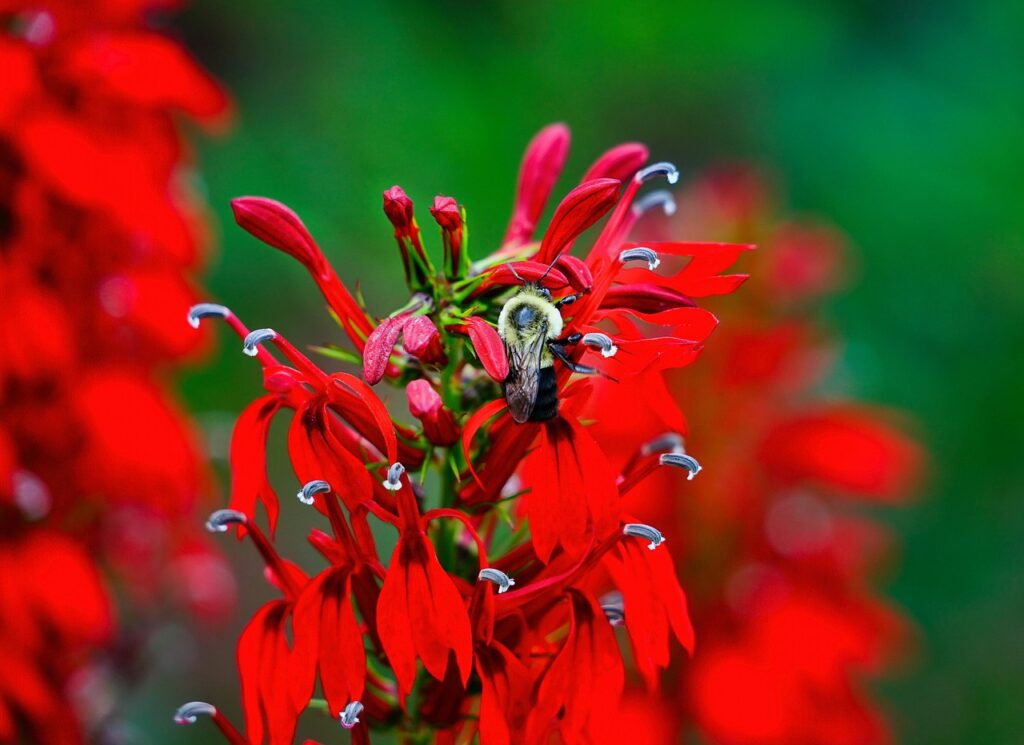
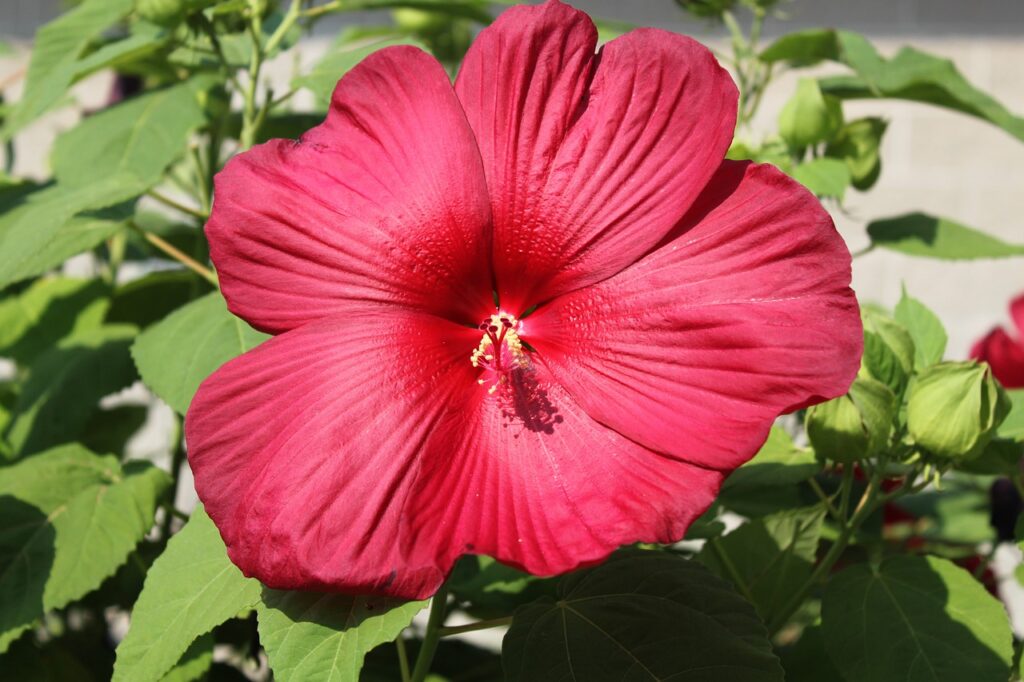
Mulching and Soil Health
Another water-saving technique native plant gardeners can employ is the use of organic mulch. Mulch helps retain moisture in the soil by reducing evaporation, and it also moderates soil temperature, keeping roots cooler during the hot summer months. As it breaks down, mulch improves soil structure, increasing its ability to hold water and nutrients. This is especially important in sandy or poor soils, where water quickly drains away. A well-mulched native plant garden not only conserves water but also provides habitat for beneficial soil organisms like earthworms, which further enhance soil health.
Promoting healthy soil is equally crucial in water management. Soil rich in organic matter has better water retention and can absorb and hold moisture for longer periods. Amending soil with compost or creating Hugelkultur beds—raised planting beds filled with decaying wood and organic material—can significantly boost the soil’s capacity to store water, creating a more self-sustaining environment for native plants.
Designing for Water Flow
In addition to conserving water, native plant gardeners can design landscapes that manage and direct water in ways that benefit both plants and the broader environment. For instance, swales—shallow channels designed to capture and redirect rainwater—can be integrated into garden designs to slow water runoff and direct it to areas where it can soak into the ground. Swales can be planted with moisture-loving native species like Monarda fistulosa (wild bergamot) and Joe-Pye weed (Eutrochium purpureum), creating both functional and visually stunning features in the garden.
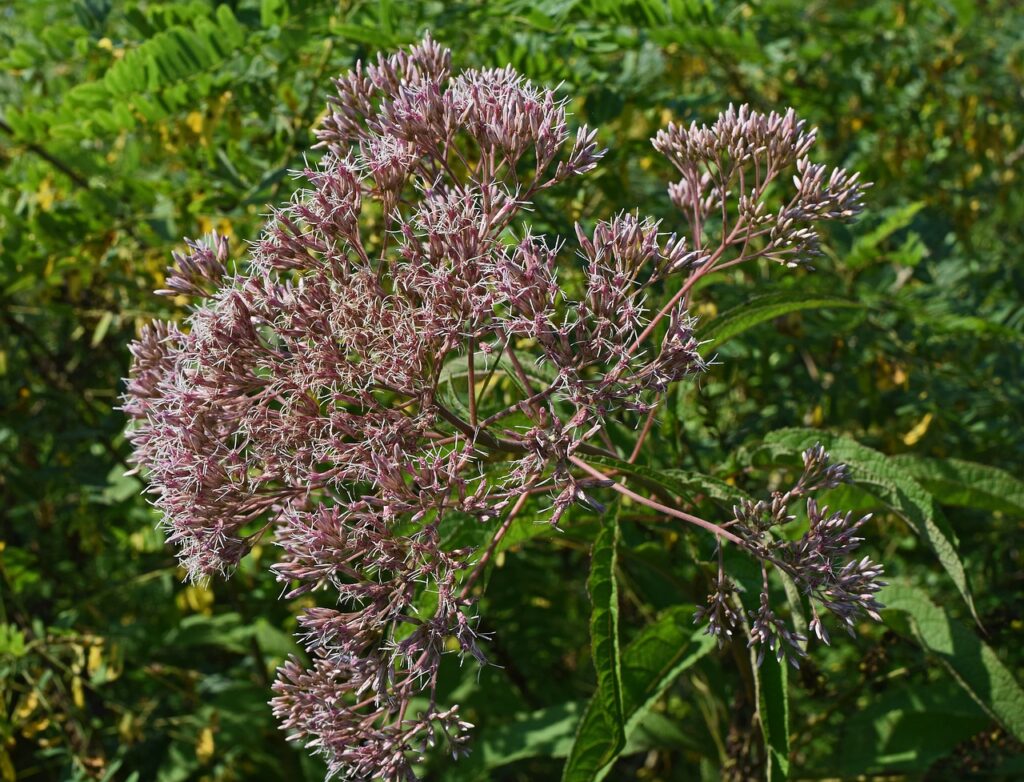

In more arid regions, xeriscaping is an excellent water-efficient landscaping approach. Xeriscaping uses drought-tolerant native plants, such as Opuntia humifusa (prickly pear cactus) and Schizachyrium scoparium (bluestem grasses), that require little to no irrigation.
These gardens are designed to minimize water use through thoughtful plant selection, soil preparation, and efficient irrigation techniques like drip systems. Xeriscaped native plant gardens not only reduce water use but also support pollinators and wildlife in challenging conditions.
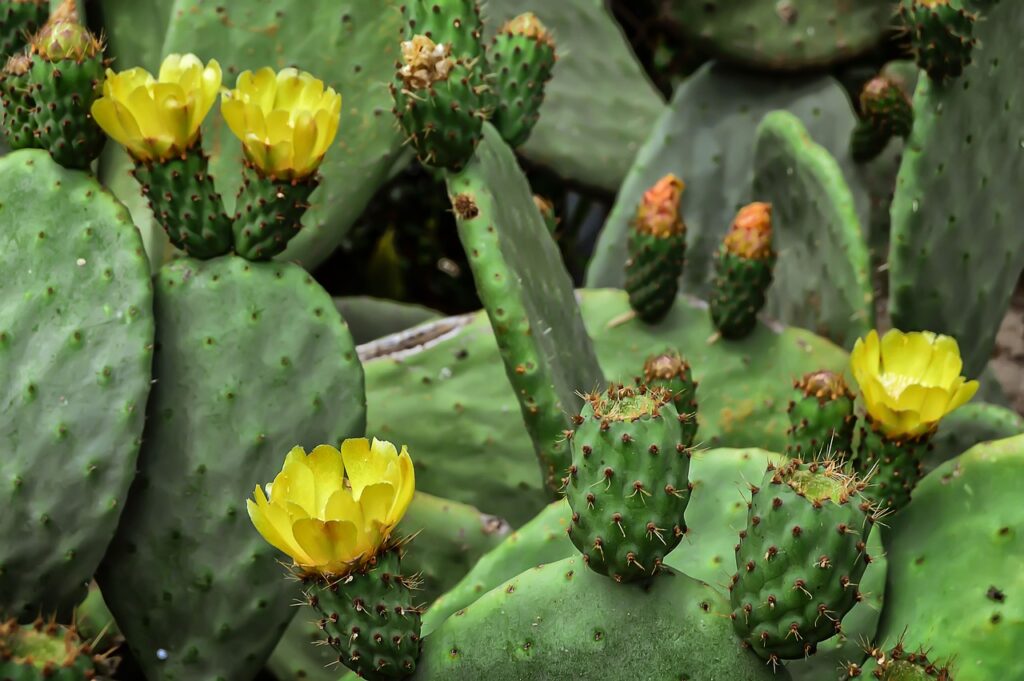
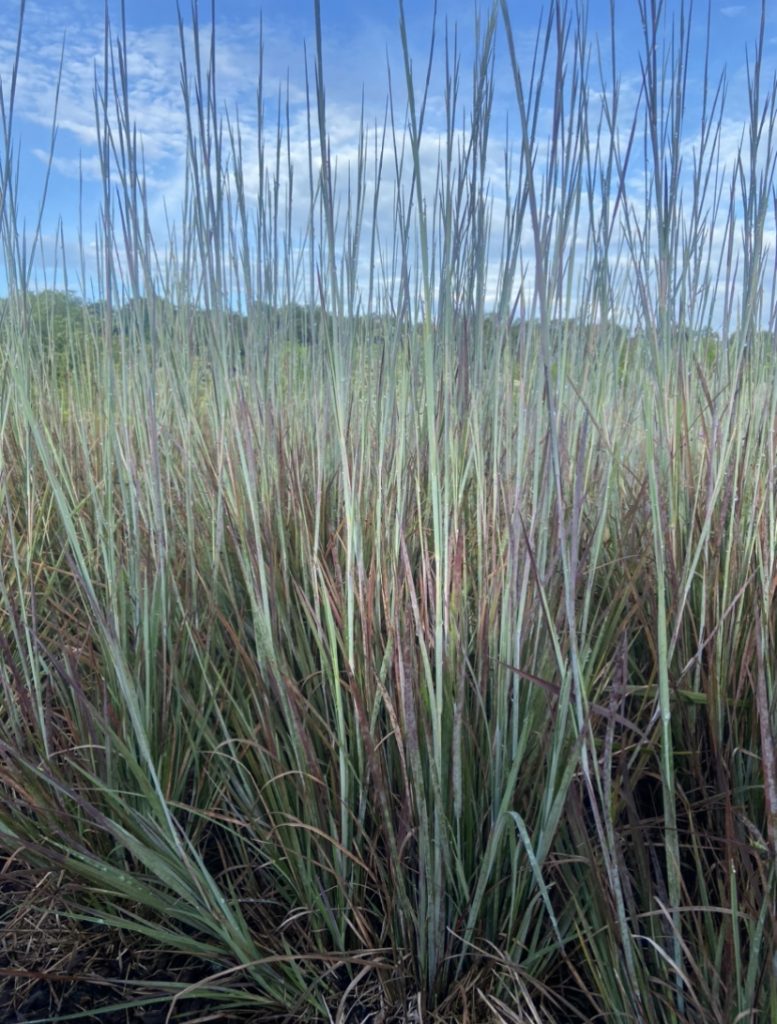
Water’s Role in Supporting Biodiversity
Beyond conserving water, native plant gardens play a critical role in supporting local biodiversity. Water features like ponds, birdbaths, or even small water troughs can attract a wide array of wildlife, from birds and butterflies to frogs, dragonflies, and other beneficial insects. By providing clean, fresh water, gardeners can create an oasis for wildlife, particularly during dry seasons when natural water sources may be scarce.
In wetlands or rain gardens, native plants also help filter stormwater runoff, removing pollutants before they reach streams, rivers, and lakes. This process not only protects water quality but also creates habitats for a diversity of species, from aquatic plants to amphibians and migratory birds.
The Future of Water-Wise Gardening
With climate change bringing more extreme weather patterns—including more frequent and severe droughts—conserving water in our gardens has never been more important. As stewards of the land, native plant gardeners have a responsibility to embrace water-wise practices and design landscapes that work with, rather than against, nature’s cycles. By harnessing the power of native plants and using water efficiently, we can create gardens that not only beautify our landscapes but also contribute to a more sustainable and resilient environment.
In the end, water is life—and as native plant gardeners, we have the power to protect and sustain this life-giving resource for future generations. By carefully managing water in our gardens, we ensure that both plants and wildlife can continue to thrive, even in an era of environmental uncertainty. Let your garden be a celebration of water’s vital role, and a testament to the resilience of native plants that have evolved to flourish with every drop.
References and Further Reading
1. Native Plants and Water Conservation
- Tallamy, D. W. (2009). Bringing Nature Home: How You Can Sustain Wildlife with Native Plants. Timber Press.
- University of Delaware Cooperative Extension. (2023). Native Plants for Delaware Landscapes
- U.S. EPA. (2017). Water-Smart Landscapes Start with WaterSense– Guidance on using native and drought-tolerant plants to reduce irrigation.
2. Rain Gardens and Stormwater Management
- Delaware Department of Natural Resources and Environmental Control (DNREC). (2022). Rain Gardens for the Bays Program
- USDA Natural Resources Conservation Service. (2020). Conservation Practice Standard: Rain Garden (Code 808)
- Rutgers University Cooperative Extension. (n.d.). Rain Garden Manual of New Jersey– Practical design and plant selection resources.
3. Soil Health and Water Retention
- Lehmann, J., & Kleber, M. (2015). The contentious nature of soil organic matter. Nature, 528(7580), 60–68.
- USDA NRCS. (2021). Soil Health Principles– Overview of how organic matter and biodiversity contribute to soil moisture retention.
- Rodale Institute. (2020). Building Soil Health for Climate Resilience– Focus on organic systems, microbial life, and carbon sequestration.
4. Climate Change and Shifting Weather Patterns
- NOAA Climate.gov. (2025). Spring and Summer 2025 Climate Recap
- Intergovernmental Panel on Climate Change (IPCC). (2023). Sixth Assessment Report – Impacts, Adaptation and Vulnerability.https://www.ipcc.ch/report/ar6/wg2/– Includes regional impacts on hydrological cycles and precipitation extremes.
5. Ecological Landscaping and Resilience
- The Sustainable Sites Initiative (SITES). (2023). Guidelines for Sustainable Landscapes
- Center for Watershed Protection. (2022). Green Infrastructure Design for Resilient Communities
- American Society of Landscape Architects (ASLA). (2024). Stormwater Case Studies– Includes examples of rain gardens, bioswales, and permeable surfaces.
6. Biodiversity and Water Features
- National Wildlife Federation. (n.d.). Certified Wildlife Habitat: Water Requirements
- Penn State Extension. (2020). Pond Management for Wildlife
- Xerces Society. (2018). Pollinator Habitat Installation Guidelines– Focuses on pollinator-safe water features and native planting.
7. Xeriscaping and Arid Zone Landscaping
- Colorado State University Extension. (2021). Xeriscaping: Creative Landscaping
- Lady Bird Johnson Wildflower Center. (n.d.). Native Plant Database– Searchable by region, soil type, and water needs.
Citation for This Article:
Lea, S. P. (2024). Life-Giving Water and Earth’s Other Free Elements: A Native Plant Gardener’s Perspective.

